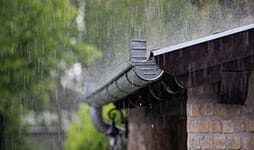The UK climate can throw anything at us from snow and frost to heavy rainfall, so it’s important to prepare your home. This could help you avoid any expensive repairs.
Our guide will provide a helpful checklist for your home to get it winter ready.

Check your boiler is in top condition
No one wants to be without hot water or heating during a cold spell, so try to ensure your boiler is well maintained.
Check your boiler
You could consider getting your boiler serviced annually before the cooler weather hits. Maybe check the water pressure on your boiler to ensure it’s working at an optimal level. You may want to install a carbon monoxide detector in your home to alert your family to any emission issues with your boiler.
Home emergency cover
Think about getting home emergency cover. This can give you peace of mind if the unexpected happens. For example, if your boiler breaks, this may save you money on repairs or could help you if your boiler needs to be replaced.
Top tip
An Energy Trust study shows that turning your thermostat down by just 1 degree could save you around 10% on your energy bill. However, please make sure your home is warm enough during the colder weather to help reduce the risk of health issues.
Bleed your radiators
Bleeding radiators and releasing any trapped air can help keep your home warm and maintain optimal boiler pressure.
What you need to do:
- Check there is warm water in the system
- Turn off the central heating
- Find the bleed valve on the radiator – it's a small valve on the side of the radiator, near the top
- Turn the valve using a key (you can buy one at your local DIY store) 180 degrees anticlockwise to expel any air trapped in the system
- When all the air has been expelled, it'll start to drip water and you can close the valve
If you’re still unsure, it’s best to contact a professional.
Wrap up your hot water tank
You could save each year on your heating bills if you install a hot water tank blanket, but savings vary by the type of household. You should be able to get one at your local DIY store.
Insulate hot water pipes
Insulating your water pipes is relatively cheap to do compared to the cost of repairing water damage.
What is a stopcock and why is it important?
The stopcock controls the flow of water around your home. Switching it off will stop water from flowing through your taps and prevent further damage if you have a water leak. It’s best to make a note of where your stopcock is in case of a leak or any repairs like replacing a washer.
Your stopcock is usually found in the kitchen underneath the sink, near the boiler or under the stairs. It can sometimes be found outside, but ask a plumber if you’re not sure.
Draught proof windows and doors
Draught-proofing your windows and doors doesn’t have to be expensive but could save you money on your energy bills.
How to insulate windows and doors
There are a number of ways to better insulate your home’s windows and doors. You can pick up draught proofing window kits at most DIY stores. For your doors, consider covering keyholes, letterboxes and any gaps at the bottom or around the edges.
Check your chimney
Cold weather can cause damage to your chimney bricks if water gets trapped inside, as the moisture freezes and expands. To ensure your chimney stays in tip-top shape make sure you do the following:
- Have your chimney cleaned
- Check the seal on the fireplace door gaskets
- Check the damper
- Have a chimney cap installed if you can
- Inspect your fireplace/chimney system for early signs of a leaky chimney or other damage
If you don’t use your chimney, then it’s worth draught proofing it as lots of heat can be lost that way.
Invest in a smart thermostat
A smart thermostat lets you control your heating through your phone or other device.
Some will automatically monitor your home’s comings and goings, so you can put the heating on only when needed – saving added energy costs. You can also control it from your phone which is extra convenient if you’re in and out of the home.
Know your home insurance
Try to make sure you’ve got the right level of cover for your needs.
Storm cover
MORE THAN buildings and contents insurance covers your home and indoor belongings if they’re damaged by an insured event – like a storm. However, storm or flood damage to fences, hedges or gates isn’t included.
If you live in an area particularly effected by events like flooding, consider your policy options and get the level of cover to suit your needs.
Clear the gutters, downpipes and gullies
Leaves, stones, moss, and other debris might end up clogging your drains and gutters. This can cause damage to your home if water can’t drain away freely. Try to clear away any debris and replace cracked or damaged gutters. Or you may prefer to contact a specialist to do it for you – it’s not normally too costly and can reduce the chance of more expensive damage to your home.
Check your roof
It might be worth getting a qualified professional to check your roof and guttering for any damage, like loose or missing roof tiles. Spotting and fixing these could potentially help prevent water damage or roof leaks.
Plan for a power cut
If you experience a power cut, you can call the National Grid to find out more on 0800 6783 105. They’ll be able to give you some advice and a rough idea of when the power will be back.
Make sure you switch off all electrical devices, like hair dryers or kettles, that may come on once the power is back. Also, remember to check on neighbours once it’s safe to do so, especially if they're older or vulnerable.
You may want to arrange an emergency pack and put it somewhere handy in case there’s a power cut. This can include:
- A battery-powered radio
- Candles
- Torch
- A power pack to charge phones or other devices
- Extra pack of batteries
- Long-lasting snacks
- Bottles of water
- A blanket
Protecting your home
Having the right cover is important if you need to make a claim, especially during colder spells. At MORE THAN, we offer 3 options:
- Buildings and contents – You can buy buildings and contents together. Having one policy in place can make it easier to manage if you need to make a claim
- Buildings only - Includes your walls, windows, garages, sheds and fixtures like kitchen units. Your home is protected against damage by fire, storm, flood and other similar causes
- Contents only – Includes your moveable belongings, furniture, appliances and your carpets. Damage that occurs over time as a result of normal use or ageing, home maintenance, or routine decoration
If you don't own the home, you may not need buildings cover so it's best to check.
There are also a range of other cover options to choose from, or you may wish to upgrade your home insurance so you’re covered for the things that matter to you.

